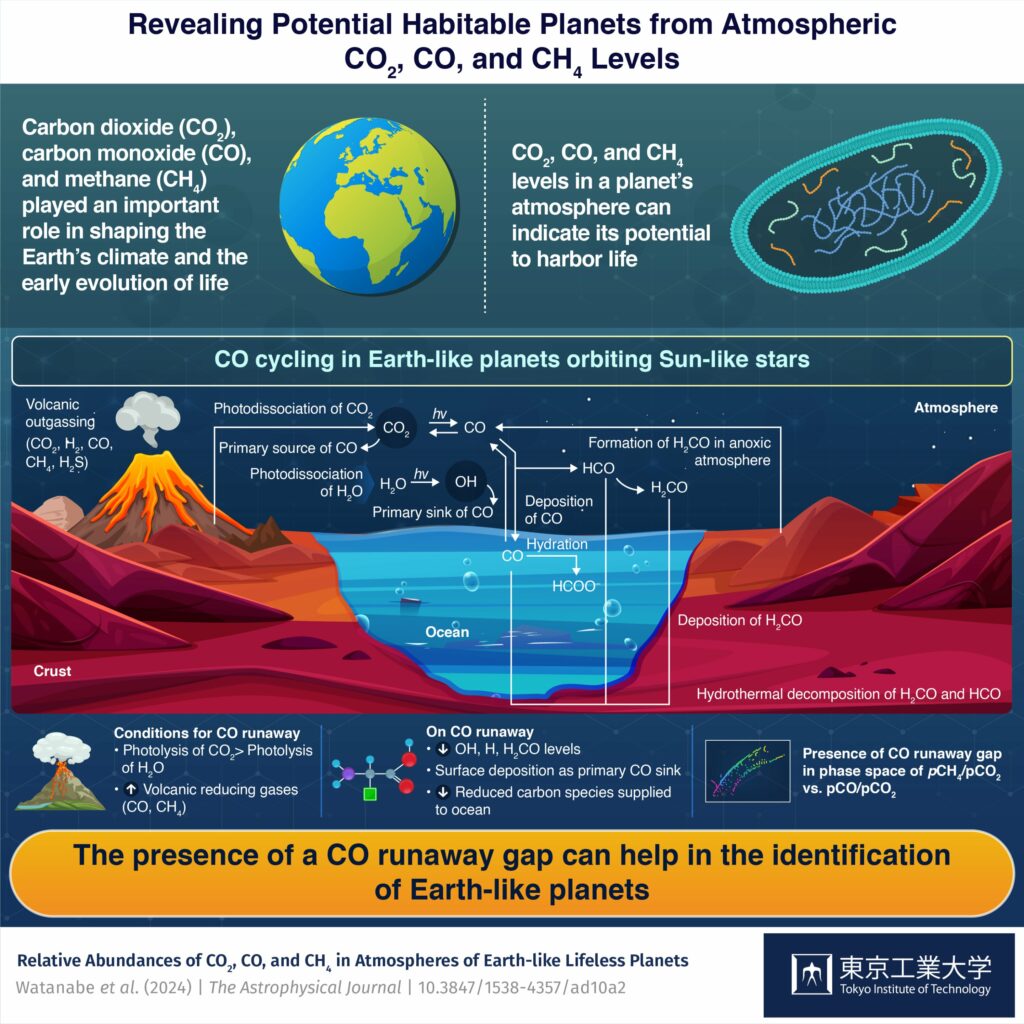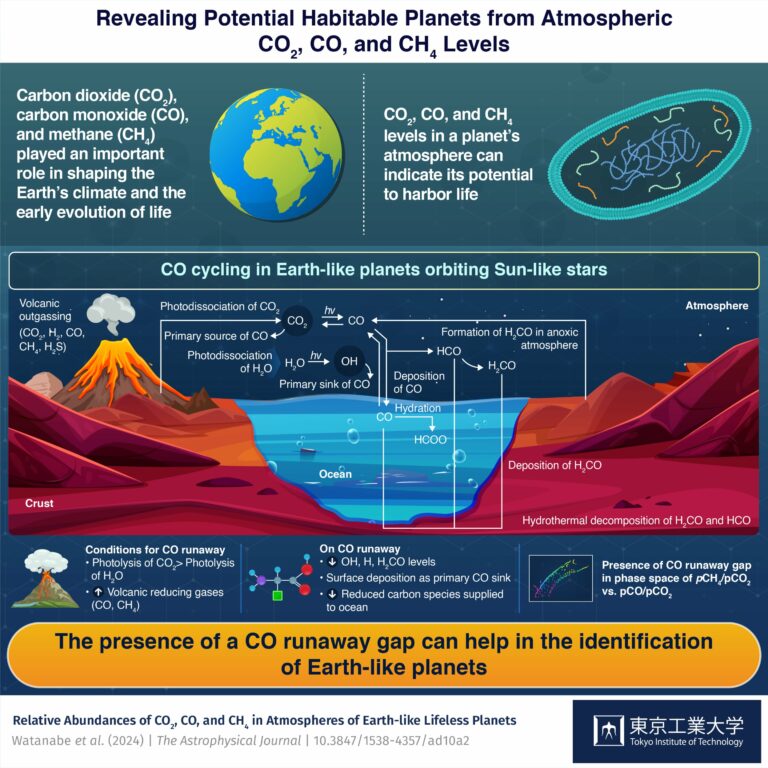Recent Unveiling of Carbon Monoxide-Driven Gap Offers Insight into Detecting Habitable Exoplanets
The search for potentially habitable exoplanets involves the examination of planets that share similar conditions to Earth, including the presence of liquid water, a suitable temperature range, and specific atmospheric conditions. One important aspect to consider is the position of the planet within the habitable zone, which is the area around a star where liquid water could potentially exist on the planet’s surface.
NASA’s Kepler telescope, which was launched in 2009, has provided evidence that a significant percentage of visible stars, ranging from 20% to 50%, may have Earth-sized rocky planets that could potentially support life. However, the mere presence of liquid water does not guarantee a planet’s habitability. On Earth, carbon compounds such as carbon dioxide (CO2), methane (CH4), and carbon monoxide (CO) play a crucial role in shaping the climate and biogeochemistry, and they could have contributed to the emergence of life.
Considering this, a recent study conducted by Associate Professor Kazumi Ozaki from the Tokyo Institute of Technology and Associate Researcher Yasuto Watanabe from The University of Tokyo aims to expand the search for habitable planets. Their research, published in The Astrophysical Journal, utilizes atmospheric modeling to identify conditions that could lead to a CO-rich atmosphere on Earth-like planets orbiting sun-like stars of the F-, G-, and K-types.
This phenomenon, known as CO runaway, is suggested by atmospheric models to have potentially occurred in early planetary atmospheres, which could have favored the emergence of life.
Dr. Ozaki explains, “The possibility of CO runaway is crucial in addressing the fundamental question of the origin of life on Earth because various organic compounds suitable for prebiotic chemistry are more likely to form in a CO-rich atmosphere rather than a CO2-rich atmosphere.”

The CO cycle between the atmosphere and the oceans was studied by the researchers, who examined the different sources of CO production, its transport mechanisms, and the processes involved in its removal. The primary source of CO was found to be the photolysis of CO2, where CO2 breaks down into CO when exposed to light.
Other sources of CO included photochemical reactions in the atmosphere, emissions from volcanic gases, and the hydrothermal decomposition of formaldehyde (H2CO) in the ocean. The removal of CO from the atmosphere mainly occurred through its reaction with hydroxyl (OH) radicals, which are formed as a result of the photolysis of water vapor. CO deposition to the planet’s surface also played a role in its removal.
The researchers discovered that a CO runaway situation arises when the production of CO exceeds its removal by OH radicals. This can happen when there are higher levels of CO2 or when reducing gases from volcanoes compete for the OH radicals. At a temperature of 277 K, the conditions for CO runaway are met when the partial pressure of CO2 exceeds 0.2 bar.
However, at higher temperatures (300 K), a CO runaway requires even higher levels of CO2 and volcanic gases due to the increased presence of water vapor in the atmosphere, which is a significant source of OH radicals. Once initiated, the levels of CO in the atmosphere are only limited by surface deposition, where CO is deposited onto the planet’s surface.
Dr. Ozaki states that the gap in the phase space, which is defined by the ratios of partial pressures (pCO/pCO2 and pCH4/pCO2), resulting from the changes in CO, CO2, and CH4 levels before and after the runaway effect, is a noteworthy characteristic of lifeless planets similar to Earth that orbit stars similar to the sun.
This finding offers valuable insights into the potential habitability and characteristics of exoplanets. Despite the uncertainty surrounding the precise conditions that lead to the emergence of life, discoveries such as the CO-runaway gap provide important clues in our ongoing search for habitable planets. These planets could potentially serve as environments conducive to the origin of life among the vast number of Earth-sized planets, approximately 40 billion, that orbit sun-like stars in the Milky Way galaxy.
This article is republished from PhysORG under a Creative Commons license. Read the original article.
Do not forget to share your opinion with us to provide you with the best posts !




0 Comments